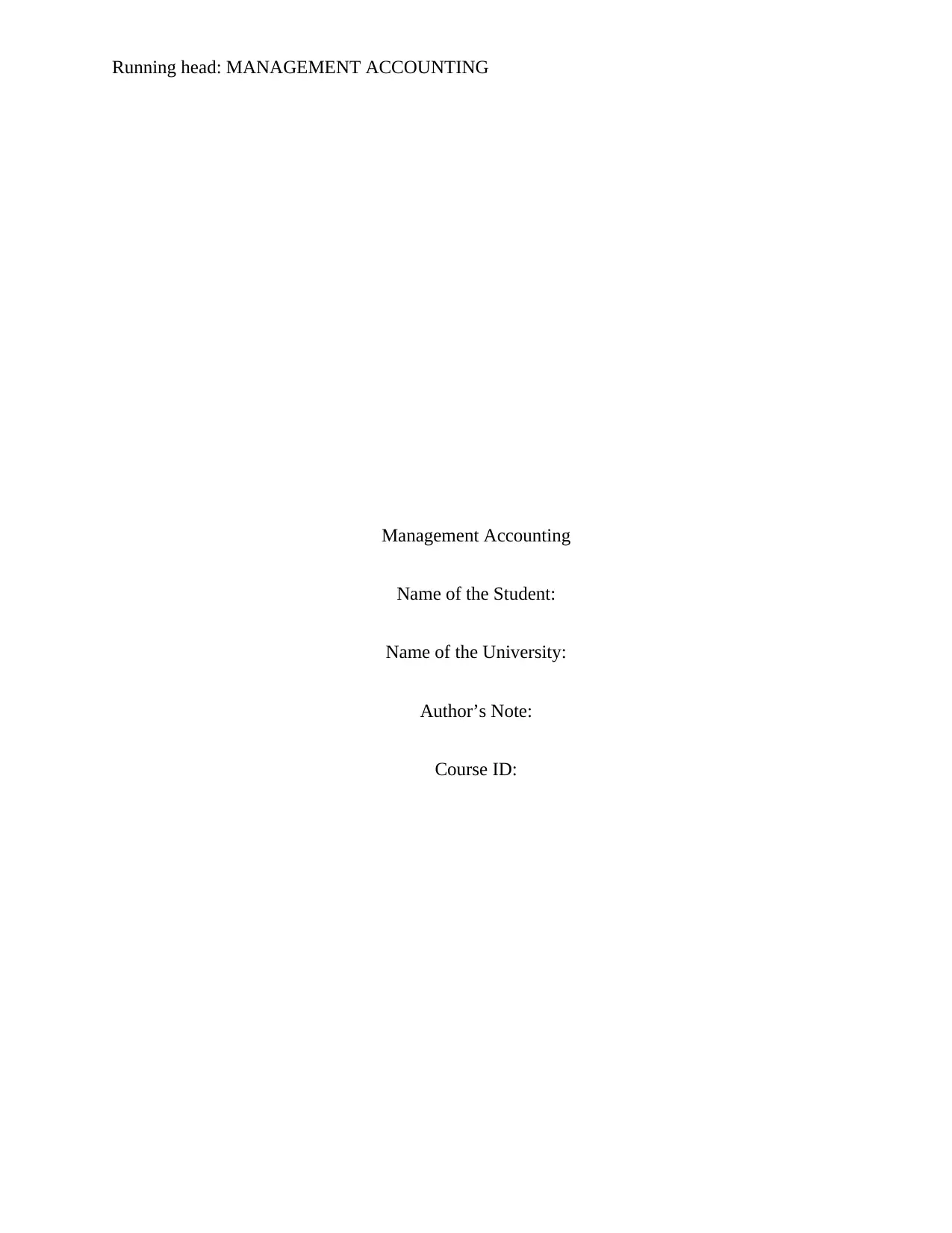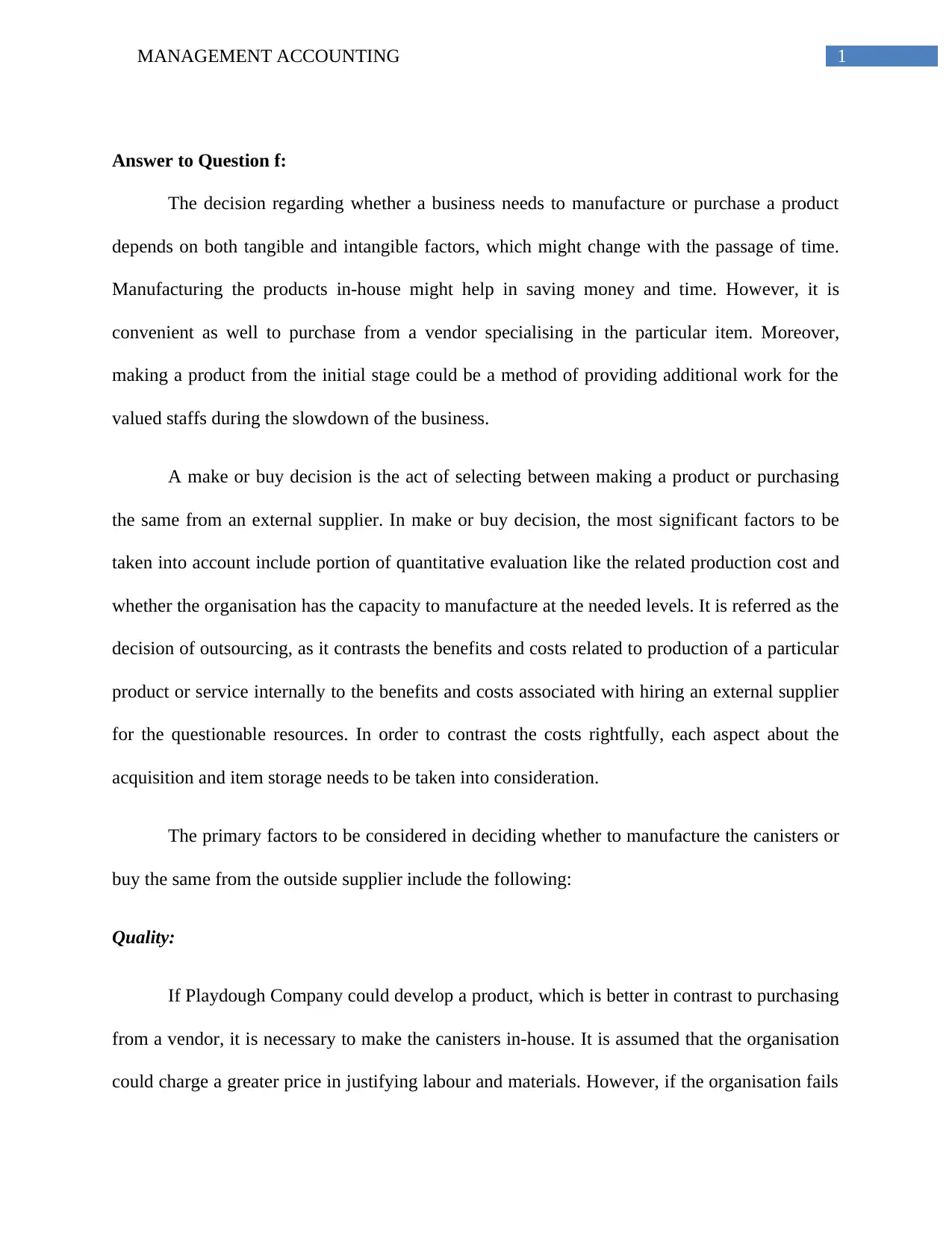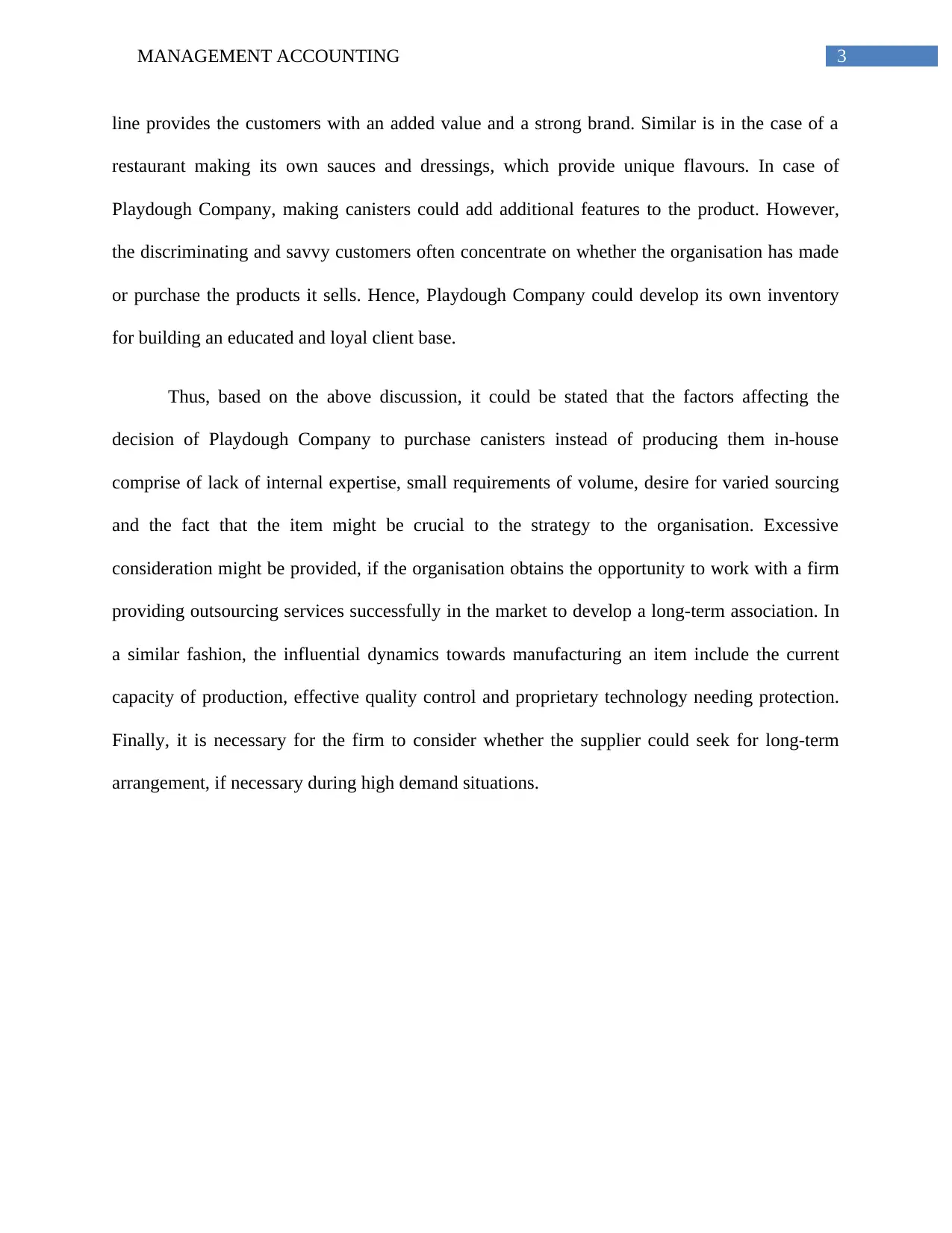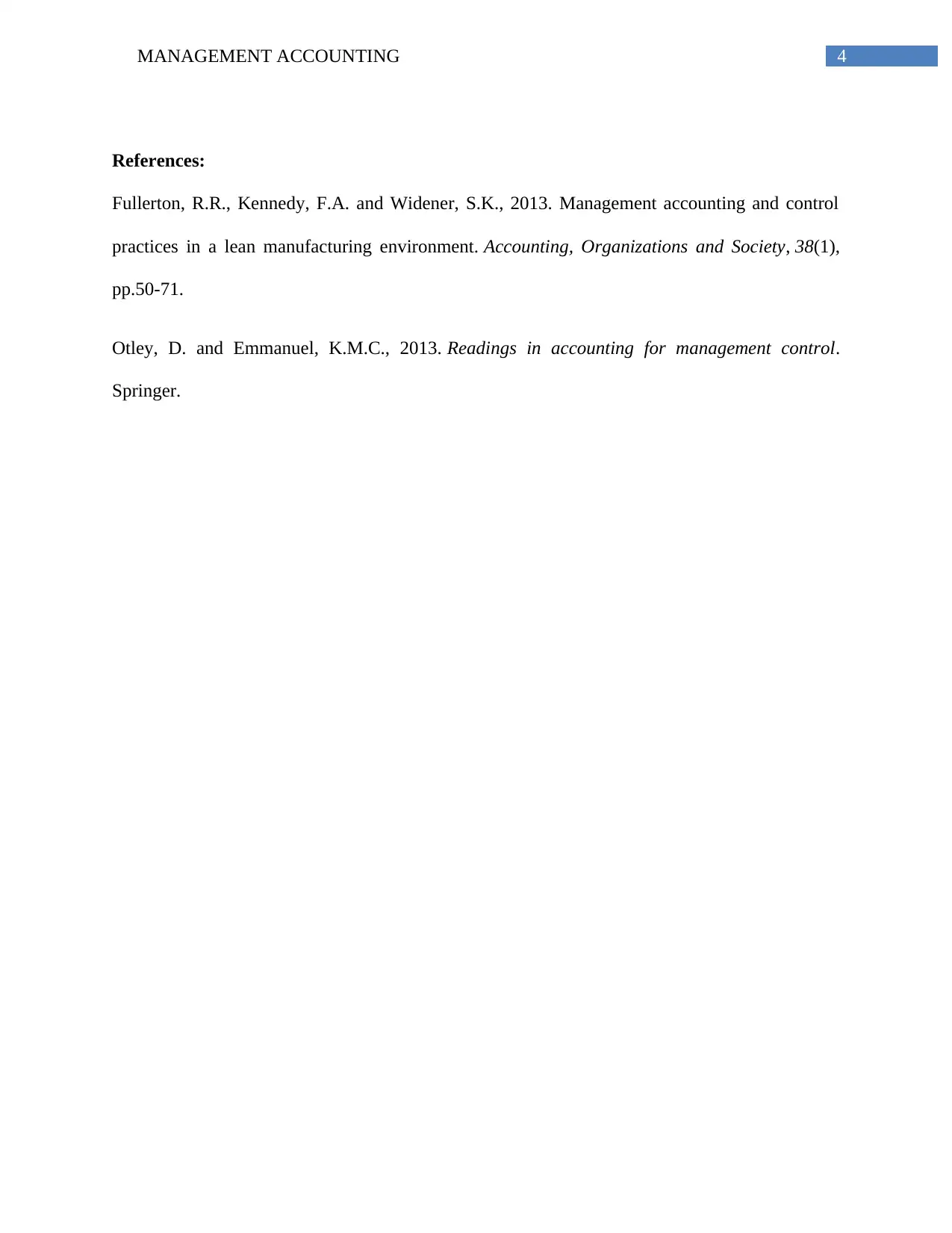Management Accounting Report: Playdough Company Analysis
VerifiedAdded on 2019/10/31
|5
|914
|270
Report
AI Summary
This report delves into the critical 'make or buy' decision in management accounting, using the Playdough Company as a case study. It examines the factors influencing this decision, encompassing both tangible and intangible aspects that evolve over time. The report explores the benefits of in-house manufacturing, such as cost and time savings, versus the advantages of outsourcing to specialized vendors. It highlights key considerations in the make or buy decision, including quantitative evaluations of production costs and the organization's manufacturing capacity. The analysis covers critical factors like quality, quantity, convenience, and marketing, providing insights into how each affects the decision-making process. The report also discusses the importance of vendor relationships, long-term arrangements, and the role of internal expertise and technology. The conclusion summarizes the factors affecting Playdough Company's decision, emphasizing the strategic implications of outsourcing and in-house production.
1 out of 5












![[object Object]](/_next/static/media/star-bottom.7253800d.svg)